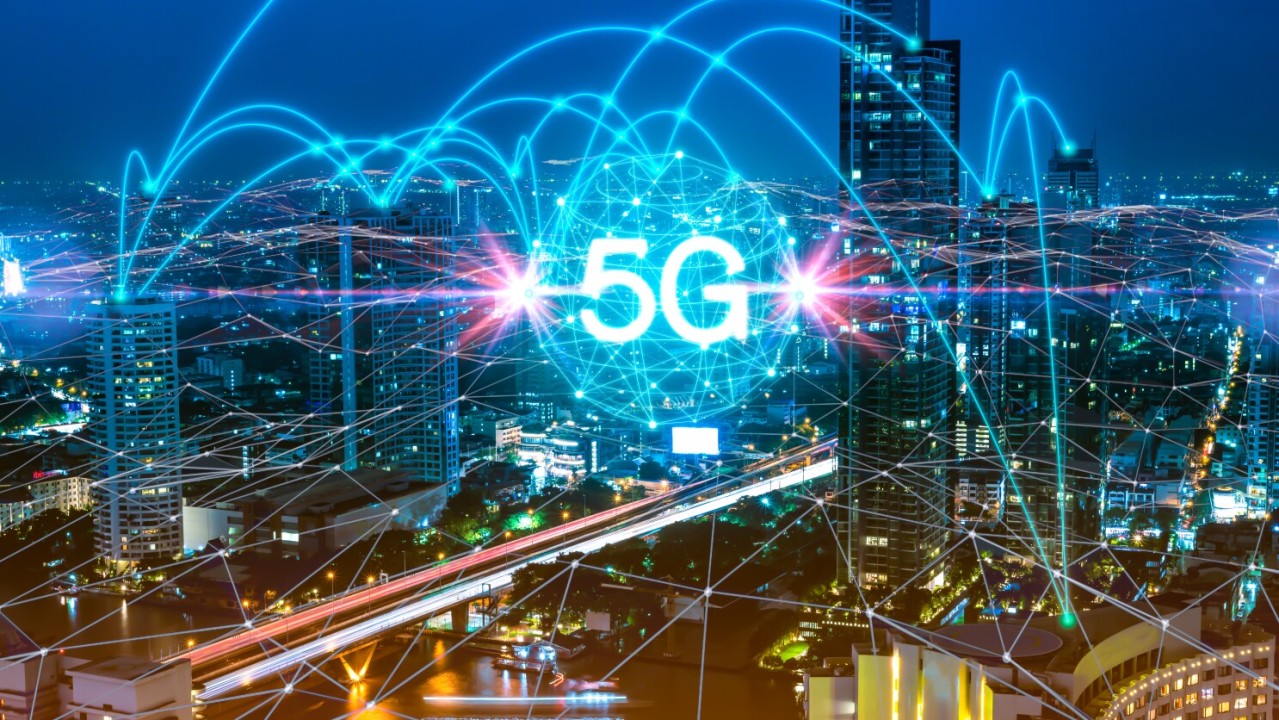Unleashing the Power of 5G Technology: A Revolution in Connectivity

Introduction
The world of telecommunications is on the brink of a monumental transformation with the advent of 5G technology. It promises not just faster internet and improved smartphone connectivity, but a technological revolution that will reshape industries, enable innovative applications, and redefine how we communicate and interact with the digital world. In this comprehensive article, we will explore the wonders of 5G technology, its capabilities, challenges, and the transformative impact it is set to bring to our lives.
Understanding 5G Technology
1. The Evolution of Wireless Technology
To comprehend the significance of 5G, we must first look at the evolution of wireless technology:
1G (First Generation):
Launched in the early 1980s, 1G technology enabled basic voice calls and marked the beginning of wireless communication.
2G (Second Generation):
Introduced in the early 1990s, 2G brought digital voice and text messaging.
3G (Third Generation):
Emerging in the early 2000s, 3G expanded capabilities to include mobile internet and video calling.
4G (Fourth Generation):
Rolled out around 2010, 4G made high-speed mobile internet, streaming, and app-based services a reality.
2. Enter 5G:
The Fifth Generation
5G, short for the fifth generation of wireless technology, is the next leap forward. It promises not just faster speeds but a multitude of capabilities that will redefine our connectivity experience. Key features of 5G technology include:
2.1. Blazing Fast Speeds
One of the most anticipated features of 5G is its incredible speed. While 4G can deliver download speeds of up to 100 MPs, 5G can provide speeds ranging from 1 Gaps to 10 Gaps, or even higher in some cases. This means that downloading large files, streaming 4K or 8K videos, and using data-intensive applications will be smoother and virtually instantaneous.
2.2. Low Latency
Latency refers to the time it takes for data to travel from the source to the destination. 5G technology boasts remarkably low latency, often less than 1 millisecond. This low latency is critical for applications that require real-time responsiveness, such as augmented reality (AR), virtual reality (VR), autonomous vehicles, and telemedicine.
2.3. Massive Connectivity
5G is designed to connect a vast number of devices simultaneously. This will enable the Internet of Things (IoT) to flourish, with billions of interconnected devices in industries like smart cities, agriculture, healthcare, and logistics.
2.4. Network Slicing
Network slicing is a unique feature of 5G that allows network operators to partition their networks into virtual segments, each customized for specific applications or user groups. This ensures that critical applications receive the necessary resources and quality of service, improving overall network efficiency.
2.5. Improved Energy Efficiency
5G technology is more energy-efficient than its predecessors. This is crucial for reducing the carbon footprint of network operations as the world becomes increasingly dependent on wireless connectivity.
The Impact of 5G Technology
1. Transforming Industries
5G technology is poised to disrupt various industries by introducing new capabilities and opportunities:
1.1. Healthcare:
Telemedicine will thrive with the low latency and high bandwidth of 5G. Remote surgeries, patient monitoring, and AI-assisted diagnostics will become more accessible.
1.2. Transportation:
Autonomous vehicles will rely on 5G’s low-latency communication to make split-second decisions. Traffic management, public transit, and logistics will also benefit from real-time data exchange.
1.3. Manufacturing:
The industrial Internet of Things (Eliot) will gain momentum as 5G enabled factories to connect and control numerous devices and robots for efficient and automated production.
1.4. Entertainment:
5G will revolutionize content consumption with ultra-high-definition streaming, immersive VR experiences, and augmented reality gaming.
2. Smart Cities
5G technology is the linchpin of smart city initiatives worldwide. With its massive connectivity and low latency, cities can deploy smart sensors, cameras, and infrastructure to improve public services, reduce energy consumption, enhance security, and optimize transportation.
3. Education
5G has the potential to bridge the digital divide in education by providing high-speed internet access to underserved areas. It will enable remote learning, virtual classrooms, and interactive educational experiences for students globally.
4. Agriculture
Farmers can harness 5G to deploy precision agriculture technologies, including drones, sensors, and automated equipment. This will optimise crop yields, reduce resource consumption, and improve sustainability.
5. Environmental Monitoring
5G technology can be utilised for real-time environmental monitoring. It will enable researchers to collect data on climate change, air quality, and natural disasters more efficiently, facilitating quicker response and mitigation efforts.
6. Enhanced Connectivity
Consumers will experience a dramatic improvement in connectivity. Buffering and lag in video streaming will become a thing of the past, and online experiences will be seamless and instant. Additionally, 5G will enable the proliferation of smart homes and connected devices, enhancing convenience and automation in daily life.
Challenges and Concerns
While the promises of 5G are exciting, its deployment and adoption are not without challenges and concerns:
1. Infrastructure Investment
Building a robust 5G infrastructure requires significant investment in new hardware, towers, and network equipment. This can be costly for network operators, which may impact the affordability of 5G services for consumers.
2. Security
As connectivity expands with 5G, so does the attack surface for cyber threats. Ensuring the security of billions of connected devices and data will be a paramount concern. Network operators and device manufacturers must prioritise cybersecurity measures.
3. Spectrum Allocation
5G networks rely on various frequency bands, including high-frequency millimetre waves. Allocating these frequencies and managing interference can be challenging. Regulators and industry stakeholders must coordinate efforts to optimise spectrum usage.
4. Rural Connectivity
While 5G offers transformative potential, ensuring equitable access to rural and underserved areas remains a challenge. Expanding 5G coverage to remote regions may require innovative solutions and public-private partnerships.
5. Health Concerns
There have been concerns raised about potential health effects of prolonged exposure to the higher frequency electromagnetic waves used in 5G technology. Ongoing research is needed to address these concerns and provide clear guidelines for safe deployment.



